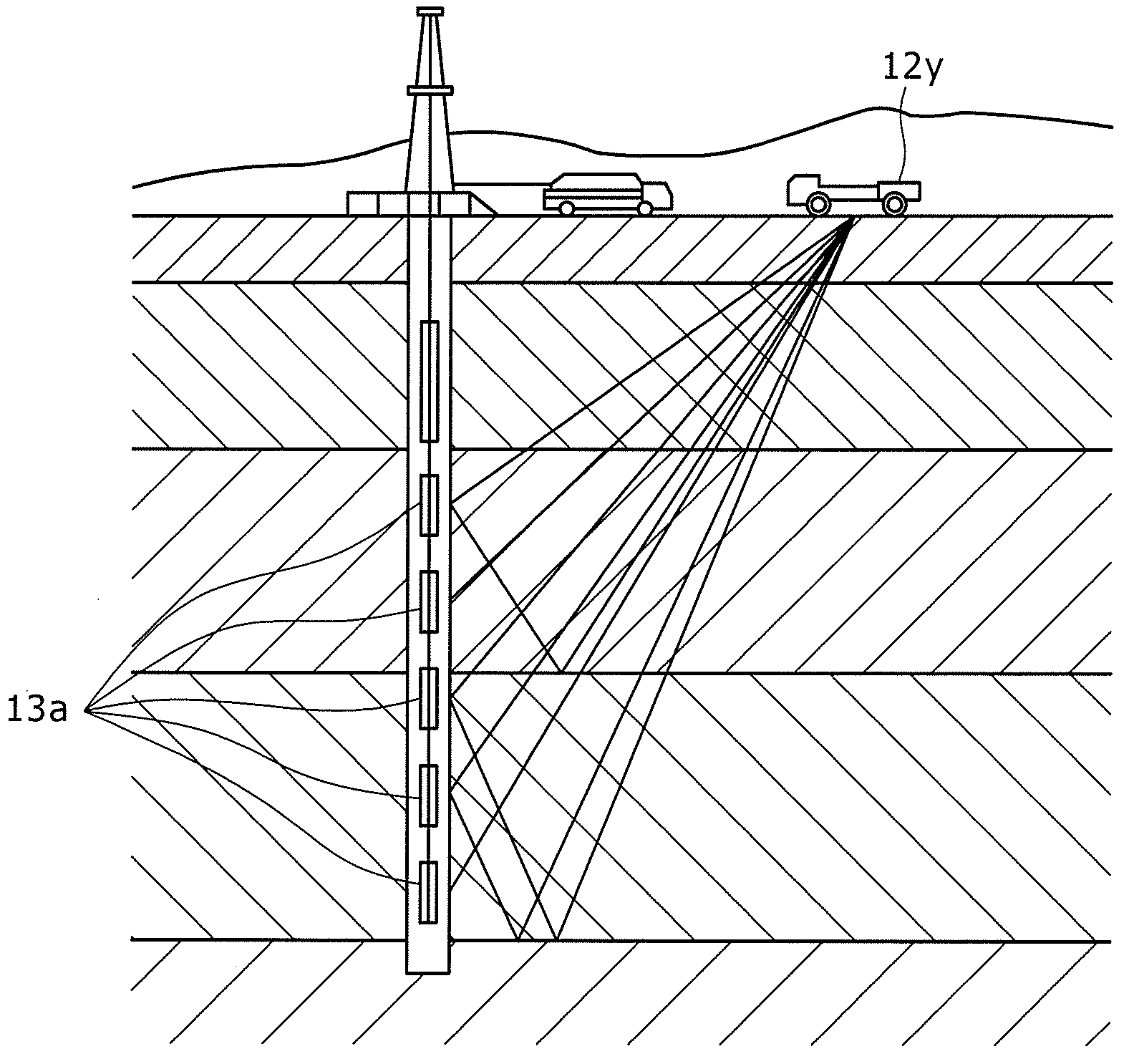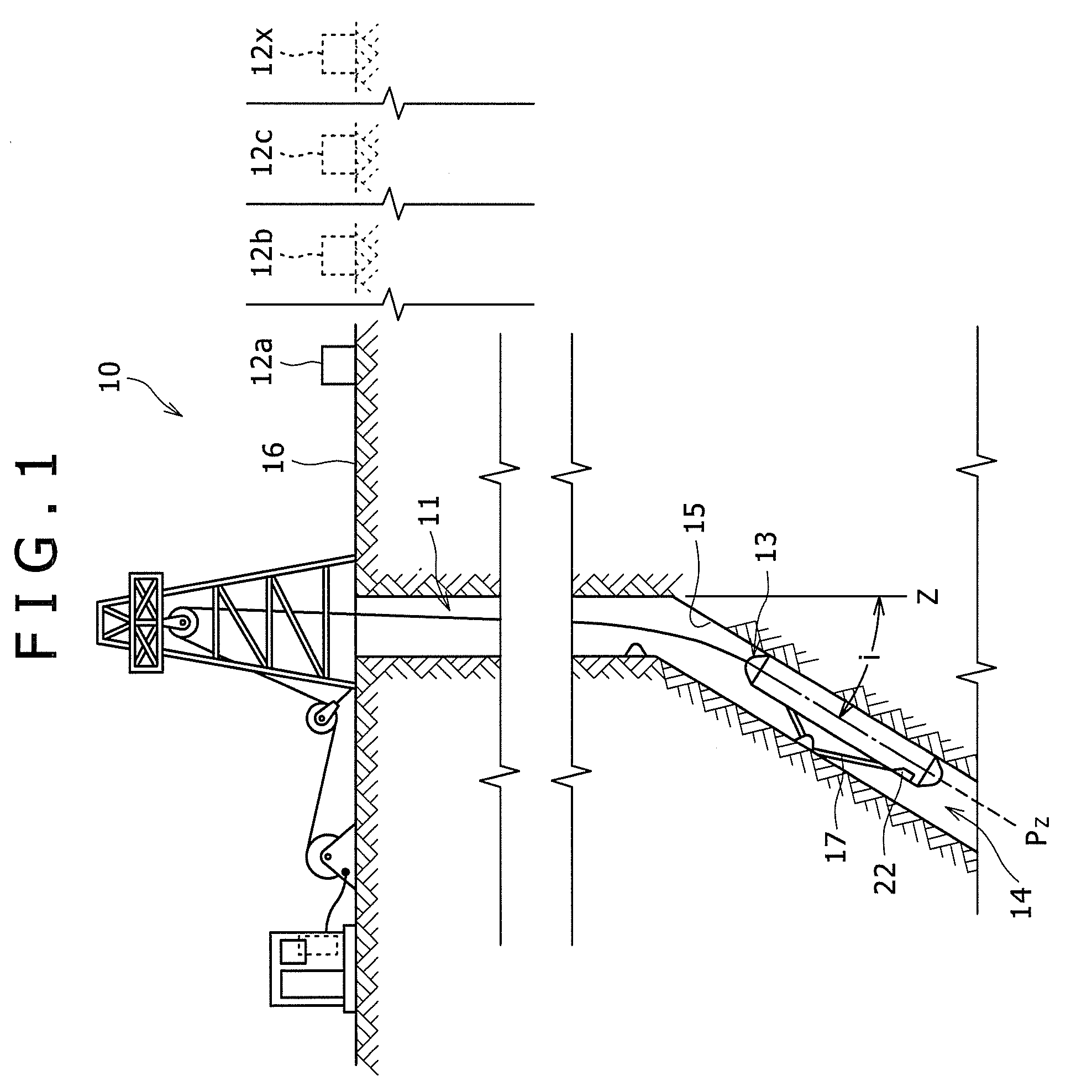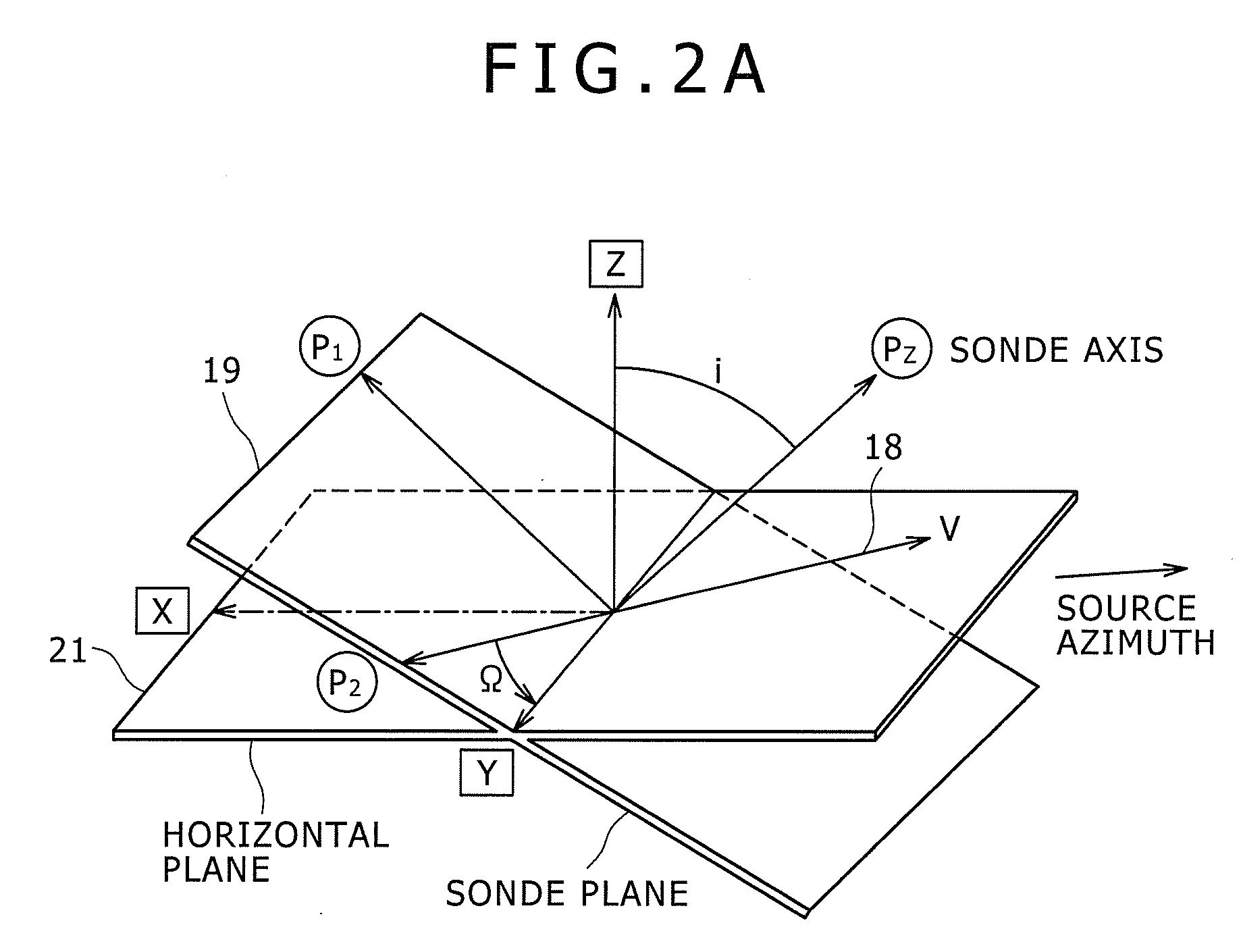Model-based relative bearing estimation of three-component receivers
a receiver and model technology, applied in the field of model-based relative bearing estimation of three-component receivers, can solve the problems of systematic errors in the estimated relative bearing angle , the difficulty of recovering formation fluids from subterranean formations, and the difficulty of recovering formation fluids
- Summary
- Abstract
- Description
- Claims
- Application Information
AI Technical Summary
Benefits of technology
Problems solved by technology
Method used
Image
Examples
Embodiment Construction
[0043]It is common to have a 3D model available when designing large-scale borehole seismic surveys. Further, it is likely that these 3D models will also be used for hydraulic fracture monitoring (HFM) and micro-seismic reservoir monitoring (MRM) applications. To improve the accuracy of 3D models and VSPs in general, new methods for 3C directional receiver orientation are disclosed herein. It will be noted that the disclosed methods apply to any 3C directional receiver tool and is not limited to seismic directional receivers like the one shown at 13 in FIG. 1 or the string of spaced directional receivers 13a illustrated in FIG. 3. Further, while land-based seismic sources at various locations are shown at 12, 12a, 12A . . . 12x and 12y in FIGS. 1 and 3, the disclosed methods are also equally applicable to off-shore operations where the seismic sources 12-12y would be associated with a boat or ship and disposed at or near the surface of the water surface or at or near the ocean floor...
PUM
 Login to View More
Login to View More Abstract
Description
Claims
Application Information
 Login to View More
Login to View More - R&D
- Intellectual Property
- Life Sciences
- Materials
- Tech Scout
- Unparalleled Data Quality
- Higher Quality Content
- 60% Fewer Hallucinations
Browse by: Latest US Patents, China's latest patents, Technical Efficacy Thesaurus, Application Domain, Technology Topic, Popular Technical Reports.
© 2025 PatSnap. All rights reserved.Legal|Privacy policy|Modern Slavery Act Transparency Statement|Sitemap|About US| Contact US: help@patsnap.com



